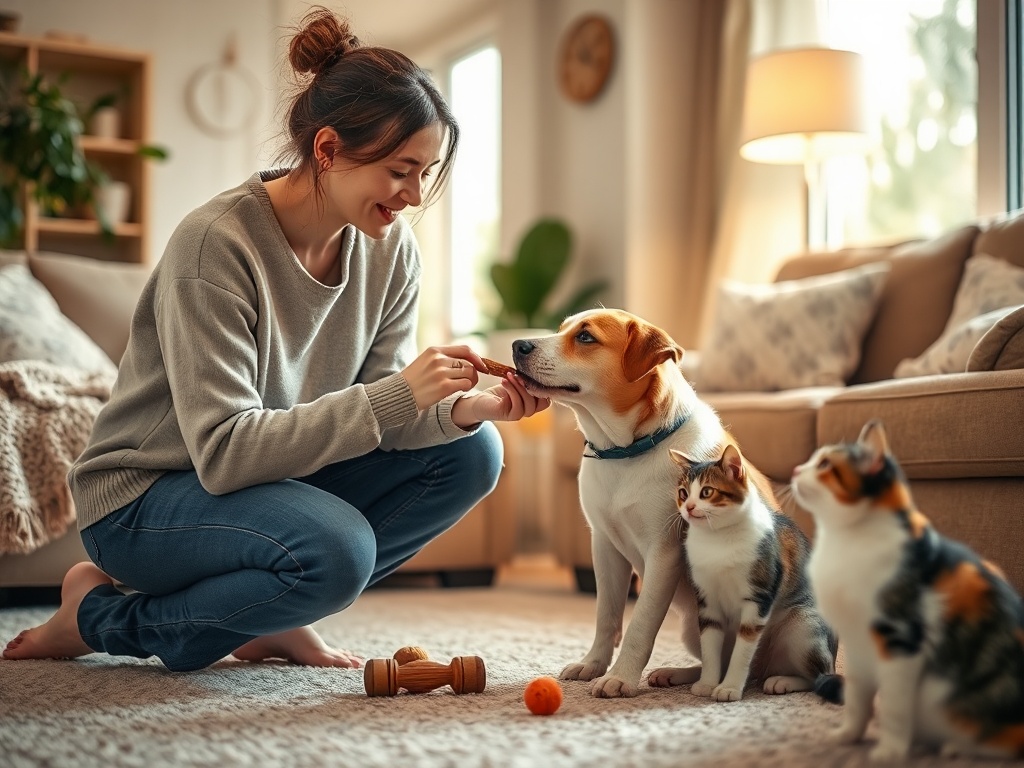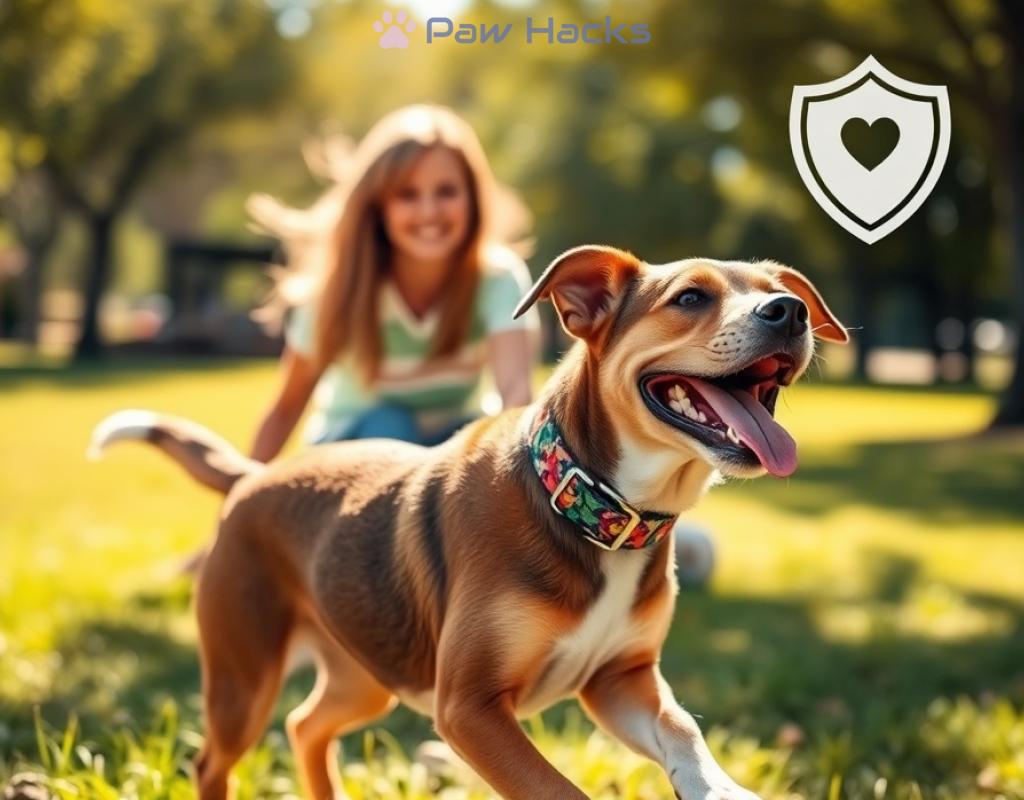Helping Adopted Pets Bond with You
Creating a Safe Space for Your New Friend
When you bring home an adopted pet, it’s essential to realize that they come with their unique history and emotional baggage. Many pets may have experienced trauma or instability, making it crucial for you to provide a safe and comforting environment. A well-established safe space allows your new friend to feel secure and gradually build trust with you.
Creating a safe space for your adopted pet involves more than just a cozy corner. It requires careful consideration of the environment, comfort, and accessibility. Here are some essential elements to include:
- Quiet Area: Choose a location in your home that is quiet and away from heavy foot traffic. This will help your pet feel less anxious and more relaxed.
- Comfortable Bedding: Provide a soft bed or blanket where your pet can curl up and feel secure. This will encourage them to settle in and feel at home.
- Toys and Enrichment: Include toys that stimulate your pet’s mind and encourage play. This will not only keep them entertained but also help them bond with you during interactive playtime.
- Safe Retreat: Ensure that there are places your pet can retreat to if they feel overwhelmed. This could be a crate or a designated room where they can feel secure.
As your pet begins to adjust to their new environment, it’s crucial to monitor their behavior and make any necessary adjustments to their safe space. Every pet is different, and what works for one may not work for another. Be observant of how they interact with their surroundings and be willing to adapt. Here are some tips for monitoring:
- Watch for signs of stress, such as hiding or excessive barking.
- Observe their favorite spots and toys to understand their preferences.
- Gradually introduce new elements into their space to keep it engaging.
Creating a safe space is a vital step in helping your adopted pet feel at home and ultimately bond with you.
Building Trust Through Gentle Interactions

Establishing a strong bond with your newly adopted pet is a journey that requires patience and understanding. One of the most effective ways to foster this connection is through gentle interactions. By prioritizing your pet’s comfort and emotional state during your interactions, you can lay the groundwork for a trusting relationship that will flourish over time.
When it comes to building trust, the way you physically interact with your pet plays a significant role. Gentle touch can convey safety and affection, helping your pet to feel secure around you. It’s important to approach them slowly, allowing them to initiate contact. Gradually introducing soft petting and caressing can help your pet associate your presence with positive experiences. Avoiding sudden movements or loud sounds will further create a soothing environment, allowing your pet to relax and embrace the bond you are trying to establish.
Engagement through calm activities can significantly enhance the bond between you and your pet. Activities such as quiet reading time, gentle grooming sessions, or low-key play can promote a sense of safety. For instance, while you read a book aloud, your pet may find comfort in your voice, establishing a deeper connection. Moreover, during grooming, not only are you caring for them physically, but you are also creating an opportunity for trust to flourish. Keep an eye out for your pet’s reactions during these moments; positive signs include leaning into your touch or settling comfortably beside you.
| Signs of Trust | Actions to Take |
|---|---|
| Your pet approaches you willingly | Reward their behavior with gentle praise or treats |
| They display relaxed body language | Continue with gentle interactions and maintain a calm demeanor |
| Your pet seeks your company during quiet times | Engage in shared activities that promote togetherness |
Building trust through gentle interactions is not a one-time endeavor but an ongoing process. It’s essential to remain observant and responsive to your pet’s needs. By ensuring that every interaction is rooted in patience and care, you create a nurturing atmosphere that will allow your relationship to blossom. Ultimately, as you invest time and effort into these gentle approaches, you’ll find that your bond with your adopted pet will grow stronger, paving the way for a loving and harmonious life together.
Engaging Playtime Activities to Strengthen Your Bond
Playtime is not just a way to keep your adopted pet entertained; it’s also an essential opportunity to deepen your connection. Engaging in playful activities allows you to learn more about your pet’s personality while they learn to trust and enjoy your company. By incorporating fun and interactive playtime into your routine, you can foster a stronger bond that benefits both you and your furry friend.
Different pets have different preferences when it comes to play. Understanding your pet’s unique interests can help you choose the right activities to engage in together. Here are some play types that can enhance your relationship:
- Interactive Games: Games like fetch or tug-of-war can stimulate your pet’s natural instincts and promote teamwork.
- Training Sessions: Incorporating training into playtime not only teaches your pet new skills but also reinforces positive behavior through rewards.
- Puzzle Toys: Using toys that challenge your pet to think can keep them mentally stimulated while allowing you to join in the fun.
To maximize bonding, it’s beneficial to establish a regular playtime schedule. Consistency helps your pet feel secure and know what to expect. Here’s how you can set up a playful routine:
- Choose a Time: Select specific times each day dedicated to play, ensuring both you and your pet have enough energy and focus.
- Mix it Up: Vary the types of activities you engage in to keep things fresh and exciting. Rotate toys or introduce new games to maintain interest.
- End on a High Note: Always conclude play sessions positively. Whether it’s a gentle cuddle or a tasty treat, ending on a good note reinforces the fun experience.
As you engage in playtime, it’s crucial to pay attention to your pet’s reactions. This will not only help you gauge what they enjoy but also strengthen your bond:
| Behavior | Implication | Action |
|---|---|---|
| Excited barking or purring | Enjoyment | Continue with the activity |
| Hiding or retreating | Overwhelmed | Give them a break and try again later |
| Leaning in or following you | Trust and interest | Encourage further interaction |
By focusing on engaging playtime activities, you not only provide your adopted pet with necessary stimulation but also pave the way for a lasting friendship built on trust and joy. The more you invest in these moments together, the stronger your bond will become, leading to a fulfilling life together.
Understanding Body Language: The Key to Connection
When it comes to forming a strong connection with your adopted pet, understanding their body language is vital. Pets communicate much more through their physical cues than through vocalizations. By learning how to interpret these signals, you can create a more profound bond, ensuring that your furry friend feels safe and understood in their new home. The subtleties of body language can reveal a wealth of information about your pet’s emotional state and comfort level, allowing you to respond appropriately and nurture your relationship.
Each pet has a unique way of expressing how they feel, but there are common body language signals that can guide you in understanding your new companion. For instance, a wagging tail often signifies excitement or happiness, but the speed and height of the wag can provide additional context. A slow wag might indicate uncertainty, while a high, fast wag often points to sheer joy. Similarly, when your pet approaches you with relaxed body posture, it’s a clear sign they trust you and feel comfortable in your presence. In contrast, stiff body language or a tucked tail can indicate fear or anxiety, signaling that your pet may need some time to adjust.
Once you grasp the basic signals, the next step is to respond appropriately to your pet’s emotions. If your furry friend displays signs of confidence and comfort, such as playfulness or curiosity, engage with them through interactive activities that encourage bonding. However, if they exhibit signs of stress, such as hiding or excessive panting, it’s essential to give them space and time to decompress. Acknowledging and validating their feelings not only helps build trust but also reassures your pet that you are attuned to their needs. This responsiveness is crucial for fostering a secure environment where your pet can thrive.
In addition to recognizing these signals, remember that every interaction is a learning opportunity for both you and your pet. Pay attention to their reactions during various activities, whether it’s during playtime or quiet moments together. Over time, you’ll develop a better understanding of their unique personality and preferences. This mutual recognition of cues will pave the way for a deeper emotional bond, making your relationship more fulfilling.
Establishing a Routine for Comfort and Security
Establishing a routine for your newly adopted pet is a fundamental aspect of helping them adjust to their new home. Just like humans, pets thrive on predictability. A consistent daily schedule provides a sense of security, allowing your furry friend to anticipate what comes next. This familiarity can significantly reduce anxiety and promote a feeling of safety, which is especially important for pets that may have experienced instability in the past.
When you create a routine, you give your pet the opportunity to feel grounded. Start by setting specific times for feeding, walks, and play. For example, if you feed your pet at the same time each day, they will learn to expect food at that hour. This simple act can build trust and help them feel more at home. Moreover, incorporating regular activity periods can also enhance their mental stimulation and physical health, further reinforcing their comfort with you as their caretaker.
Beyond just a schedule, creating rituals can deepen the bond between you and your pet. Rituals are activities that hold special significance and can foster a sense of belonging. For instance, consider designating a specific time each day for quiet cuddle sessions or gentle grooming. These moments not only provide comfort but also promote closeness and trust.
Additionally, involving your pet in household routines can also enhance their sense of security. Whether it’s inviting them to join you while you cook or having them by your side during your evening wind-down, these interactions create a shared experience that strengthens your connection. Remember, pets are highly attuned to their humans’ emotions; the more you include them in your daily life, the more secure they will feel.
As your adopted pet begins to settle into their new environment, it’s essential to remain flexible and adapt the routine based on their evolving needs. Each pet is unique and may require different approaches as they grow more comfortable with their surroundings. Pay attention to their behavior and adjust the routine accordingly. For instance, if your pet seems particularly anxious during certain times of the day, consider modifying the schedule to alleviate their stress.
Regularly observing your pet’s reactions within the established routine can provide valuable insights into what aspects they enjoy and what may need tweaking. This responsiveness not only bolsters their sense of security but also shows them that you are committed to their well-being. As you create a nurturing environment through a thoughtful routine, you’ll find that your bond grows stronger, leading to a happier and more harmonious life together.
Share this content:



